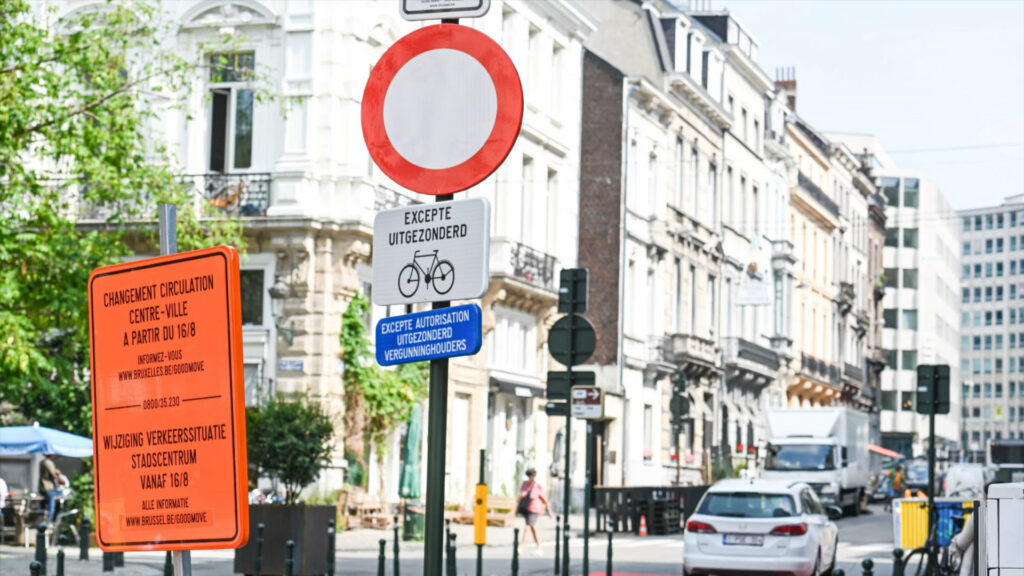Since the introduction of the Good Move traffic circulation across the Brussels-Capital Region last summer, figures now show a 19% reduction in car traffic in the city centre; bicycle traffic grew by the same amount.
Six months after the introduction of Good Move, which prioritises pedestrians and cyclists over drivers and aims to make numerous neighbourhoods across the Capital Region largely car-free, the circulation plan is doing what it promised, figures requested by Bruzz show.
"Much has been written about the new traffic plan, but we are moving Brussels in the right direction. The city is buzzing like never before and, thanks to you, our streets are getting safer and the air we breathe healthier," said Brussels city councillor for mobility Bart Dhondt on Twitter.
City authorities commissioned readings on 26 October 2021 (before Good Move was introduced) and on 8 November 2022 (after). Both were carried out during the morning and evening rush hour at 45 intersections within the city centre and at another 30 spots on the Small Ring Road.
On the Small Ring Road, the total number of cars entering or leaving the city centre (called the 'Vijfhoek' in Dutch, 'Pentagone' in French) appears to have fallen by 16%, but that general figure hides differing local situations. At Boulevard Pachéco, for example, vehicle numbers dropped around 50%. Conversely, an increase of just over 50% was seen at Place des Barricades. Traffic remained roughly the same at Porte de Flandre.
Within the city centre, the drop is even more pronounced: 19.2% fewer cars were counted than before the plan was introduced; though greater fluctuations can be seen on individual streets. The number of cyclists rose by 20% as if to directly make up the drop in cars.
Opting for other modes of transport
As the count already dates back to November (just three months after the introduction of Good Move), the figures are likely even more pronounced now, said Dhondt. "Many people have already changed their behaviour and many are making changes."
The figures also counter an oft-touted argument that the new circulation plan is pushing car traffic to the already saturated Small Ring Road, creating a traffic jam in and around all of Brussels.
However, figures from GPS providers show that in January 2023, it took exactly 60 minutes to drive around the entire Small Ring Road during peak rush hour – five minutes faster than before Covid-19, and barely slower than in spring 2021.
Related News
- A wheely good commute: Massive rise in Belgians biking to work
- 'Road safety is not always easy': Brussels must stick with Good Move plan
- Boosting footfall: More visit central Brussels since Good Move
"It shows that the so-called 'evaporation principle' does work," Dhondt said, referring to the fact that people will simply opt for other modes of transport if their car is no longer the most convenient. "A lot of people have simply switched to cycling or public transport. That way, the circulation plan contributes to the ultimate goal: a more pleasant city for everyone."
He stressed that the preliminary assessment in the city centre is quite remarkable, as the local authorities in municipalities such as Anderlecht, Jette and Schaerbeek have paused or reversed their Good Move plans when protests arose, while the plan in the city centre remained in place.

